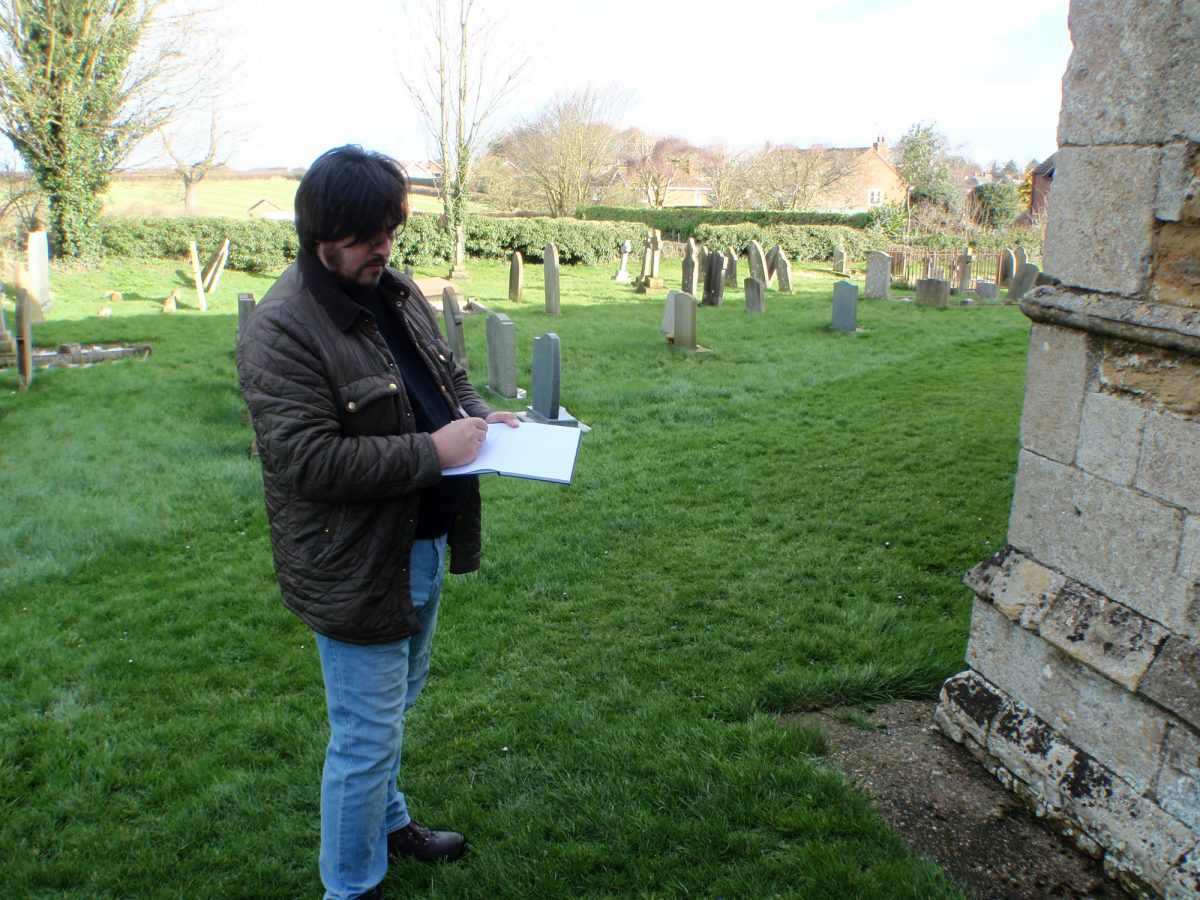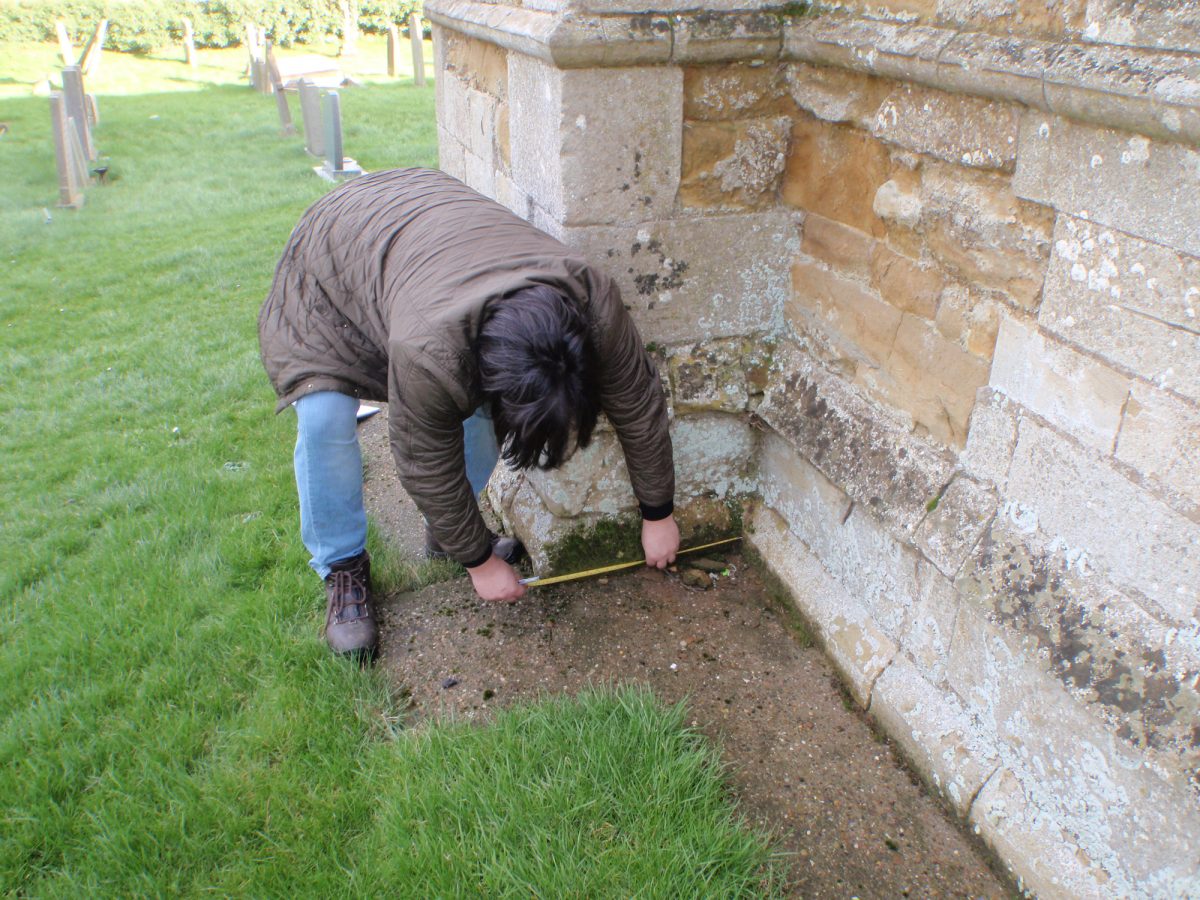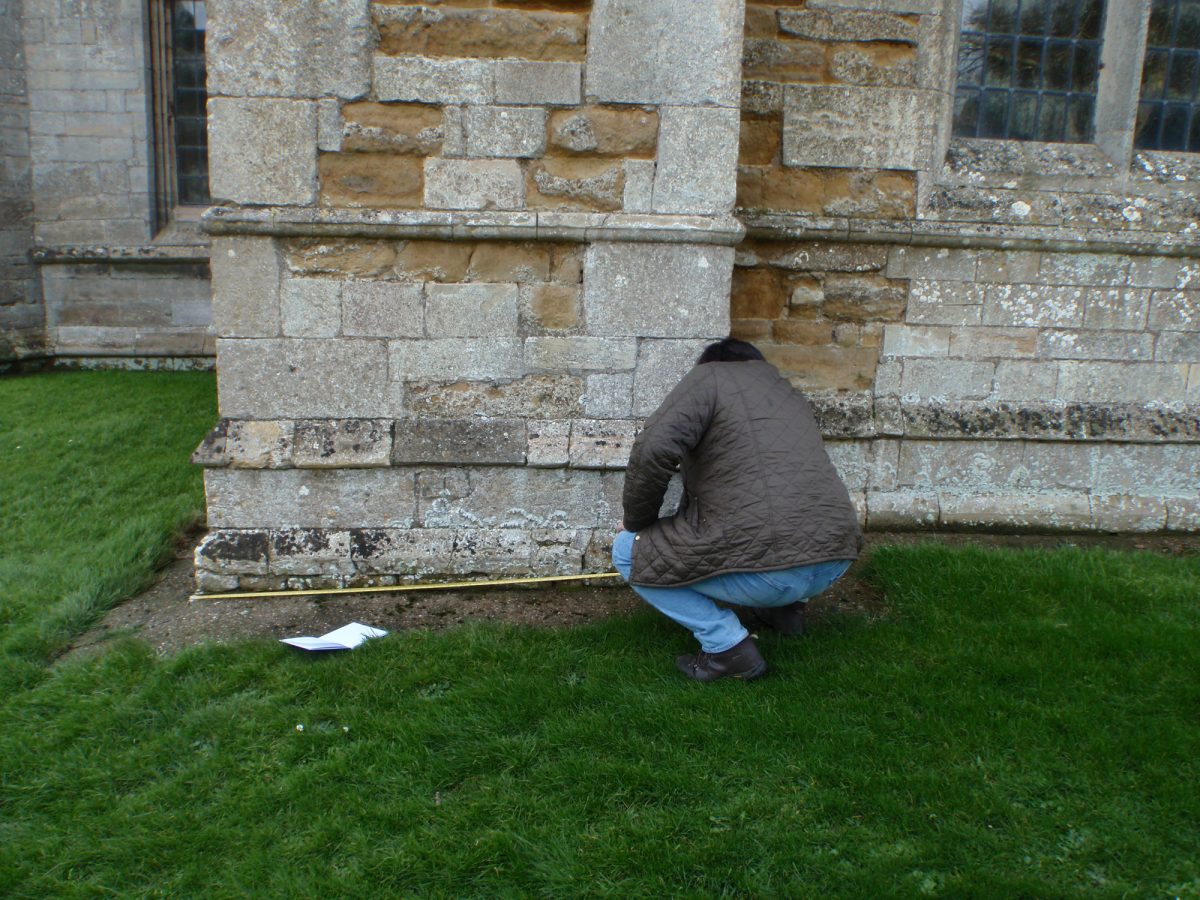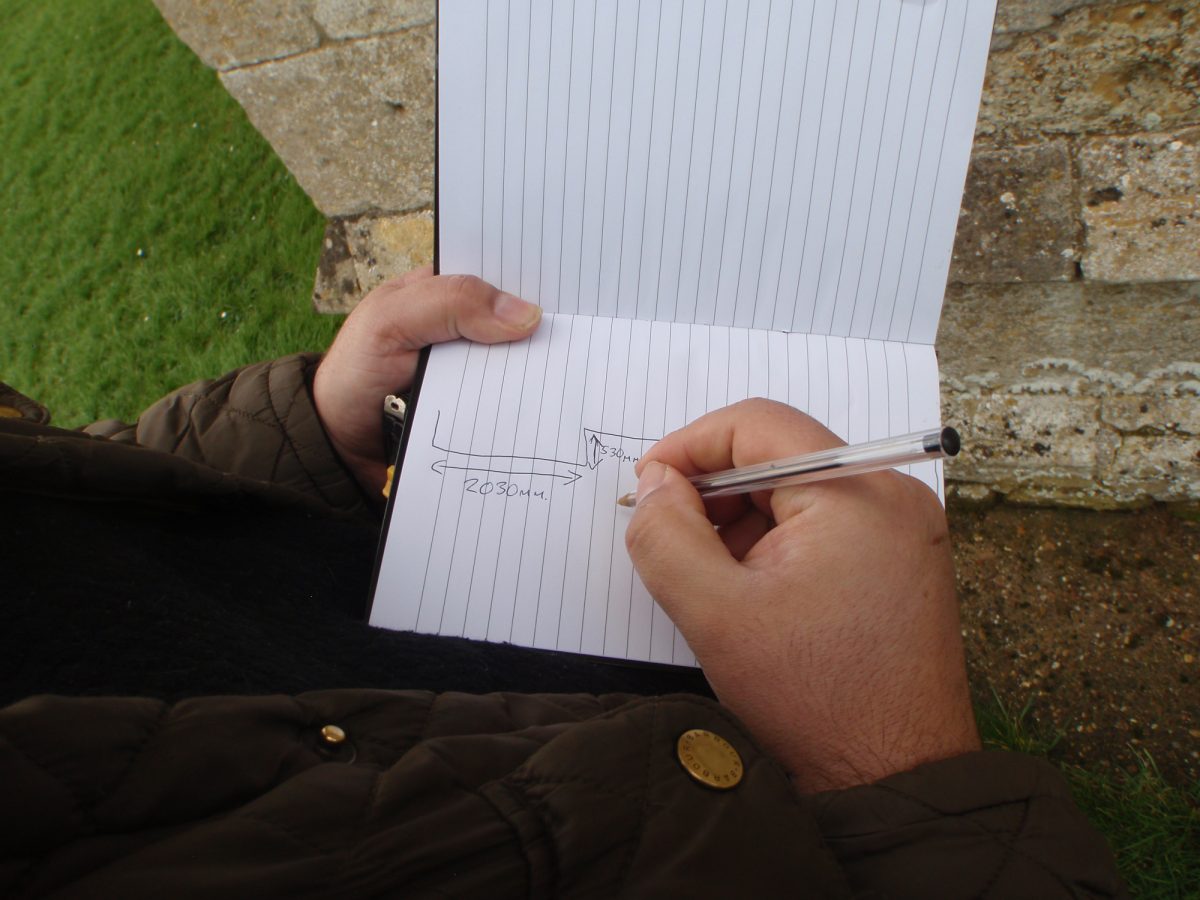Description and Photography
Topic 1: Description and Photography
The first part of studying the landscape is to make notes of what you can see, and take photographs for future reference.
The early stages of stages of site recording can be carried out with some basic, readily available equipment. These are a notebook, a pen and/or pencil, a compass and a camera.
If you have already done some research on the site, a copy of any plans or maps might come in useful.
Let us imagine that we are recording the west end of a church and graveyard.

Volunteer recording at Harlaxton Church.
1
The first thing to do is to have a good look at and think about the site. Take time to walk around and across the site and any buildings or structures so that you have a good chance of seeing all there is to see. If you have a site plan, make sure you know where things are on that plan.
2
The next step is to make a sketch of the site. Use your compass to find north, and mark this on your sketch with an arrow. If you have an existing plan, you may wish to mark anything you have seen that isn’t on the plan.
3
Now you can begin describing the site. Choose a feature and take a photograph. Note the number of the photograph in your notebook and say what the photo is of, and which way you were looking. I often find it useful to number the feature on the sketch, so I know which notes and photographs refer to which part of the site.
4
Now you can write a brief description of the feature. In this case it is a “stone buttress showing signs of restoration” It doesn’t have to been overly detailed for the individual feature, as long as it reminds you what it is.
5
At this stage you may want to make a rough sketch and add some measurements.
Measuring the base of a buttress and recording the measurements on a rough sketch.
6
As you continue around the site, you will build up a collection of photographs and notes. Hopefully, you will also be beginning to think about why the features are arranged as they are. Feel free to make a note of those thoughts, they may help explain what was happening here in the past.
7
Once you have been round the site, you can then try and bring it all together. Write your thoughts about the site as a whole, what you think it was, and how clear the features were.
When you get home, remember to download your photographs, and you might want to type up your notes. Your notes and photographs together form a document, not unlike a blog entry, that you can share with others.



